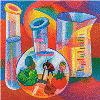Chemical and Biomolecular Engineering, Department of: Papers in Subdisciplines

Papers in Biotechnology
Date of this Version
10-1-2004
Abstract
Haemophilia replacement factors, both plasma-derived and recombinant, are in relatively short supply and are high-cost products. This has stymied the study and development of alternative methods of administration of haemophilia therapy even in the most economically advanced countries, owing to the large amounts of material needed because bioabsorption and bioavailability of haemophilic factors can be less than 10% when using non-intravenous routes of delivery. There is therefore a need to increase access to therapy worldwide by decreasing the cost and increasing the abundance so that therapy can be achieved through simplified, alternative delivery methods. Transgenic livestock have been used to produce haemophilic factors in milk. Only the pig mammary gland has been shown to carry out the post-translational processing necessary to enable both the biological activity and long circulation half-life needed for therapeutic glycoproteins. Furthermore, the large amounts of recombinant protein that can be produced from pig milk make feasible the use of alternative delivery methods such as oral, intratracheal, subcutaneous, and intramuscular administration.


Comments
Reprinted from Haemophilia, volume 10, suppl.4 (October 2004), 70–76 doi:10.1111/j.1365-2516.2004.00983.x ‘The definitive version is available at www.blackwell-synergy.com'.